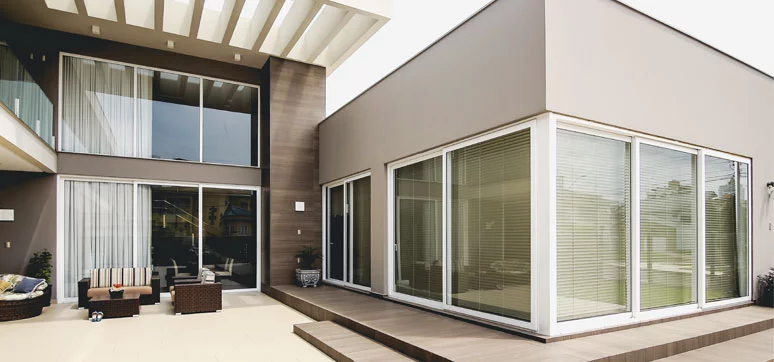Difference Between PVC and uPVC: A Complete Guide by Euwin

When it comes to choosing the right material for your home improvement or construction projects, understanding the difference between PVC and uPVC is crucial. While both are derived from Polyvinyl Chloride, their properties and applications set them apart significantly. This guide by Euwin will help you grasp the key distinctions and decide which is best suited for your needs.
PVC vs. uPVC: What’s the Difference?
PVC (Polyvinyl Chloride) and uPVC (Unplasticized Polyvinyl Chloride) share a common base material but differ in their manufacturing process and properties. Below are the major differences:
1. Manufacturing Process
PVC:
PVC is made pliable by adding plasticizers during the manufacturing process. These plasticizers reduce the rigidity of the polymer, making PVC flexible and ideal for applications that require bending and shaping.uPVC:
In contrast, uPVC is unplasticized, meaning no plasticizers are added. This makes uPVC rigid, sturdy, and highly durable, ideal for applications requiring structural integrity.
2. Use Cases
PVC Applications:
PVC is widely used in applications where flexibility is needed, such as:- Plumbing systems (especially irrigation).
- Pool circulation systems.
- Electrical conduit pipes.
Its flexibility allows it to be molded into various shapes and fastened easily with adhesives.
uPVC Applications:
uPVC is commonly used for:- Heavy-duty water transportation.
- Construction (windows, doors, and frames).
- Industrial piping resistant to chemicals and corrosion.
Its rigidity makes it suitable for applications where strength and durability are critical.
3. Plastic Pipe Fittings
PVC Fittings:
PVC pipes require additional effort for fittings, as they are slightly complex to handle due to their flexibility and reliance on specific adhesives.uPVC Fittings:
uPVC pipes, on the other hand, are lightweight and easy to install using solvent cement. Their lightweight nature also reduces transportation and installation costs, making them a practical choice for large-scale projects.
4. Durability
While both materials are designed to last, uPVC is significantly more durable than PVC. Its rigid structure:
- Offers higher resistance to physical impact.
- Reduces air infiltration when used in windows and doors, ensuring energy efficiency.
5. Safety and Environmental Considerations
PVC Risks:
PVC contains plasticizers like phthalates (e.g., DEHP, Dibutyl, and Benzyl Butyl), which can release harmful fumes, such as hydrogen chloride (HCl), during a fire. These health hazards make PVC less eco-friendly.uPVC Safety:
uPVC is free from harmful plasticizers, making it a safer, more eco-conscious option. It is also recyclable, contributing to sustainable construction practices.
Why Euwin Recommends uPVC for Your Home
At Euwin, we prioritize quality, safety, and sustainability, which is why our focus is on uPVC products for windows, doors, and piping. uPVC’s durability, energy efficiency, and eco-friendly properties make it the ideal choice for:
- Long-lasting window and door frames.
- Secure and stylish home renovation projects.
- Heavy-duty applications in commercial and industrial settings.
